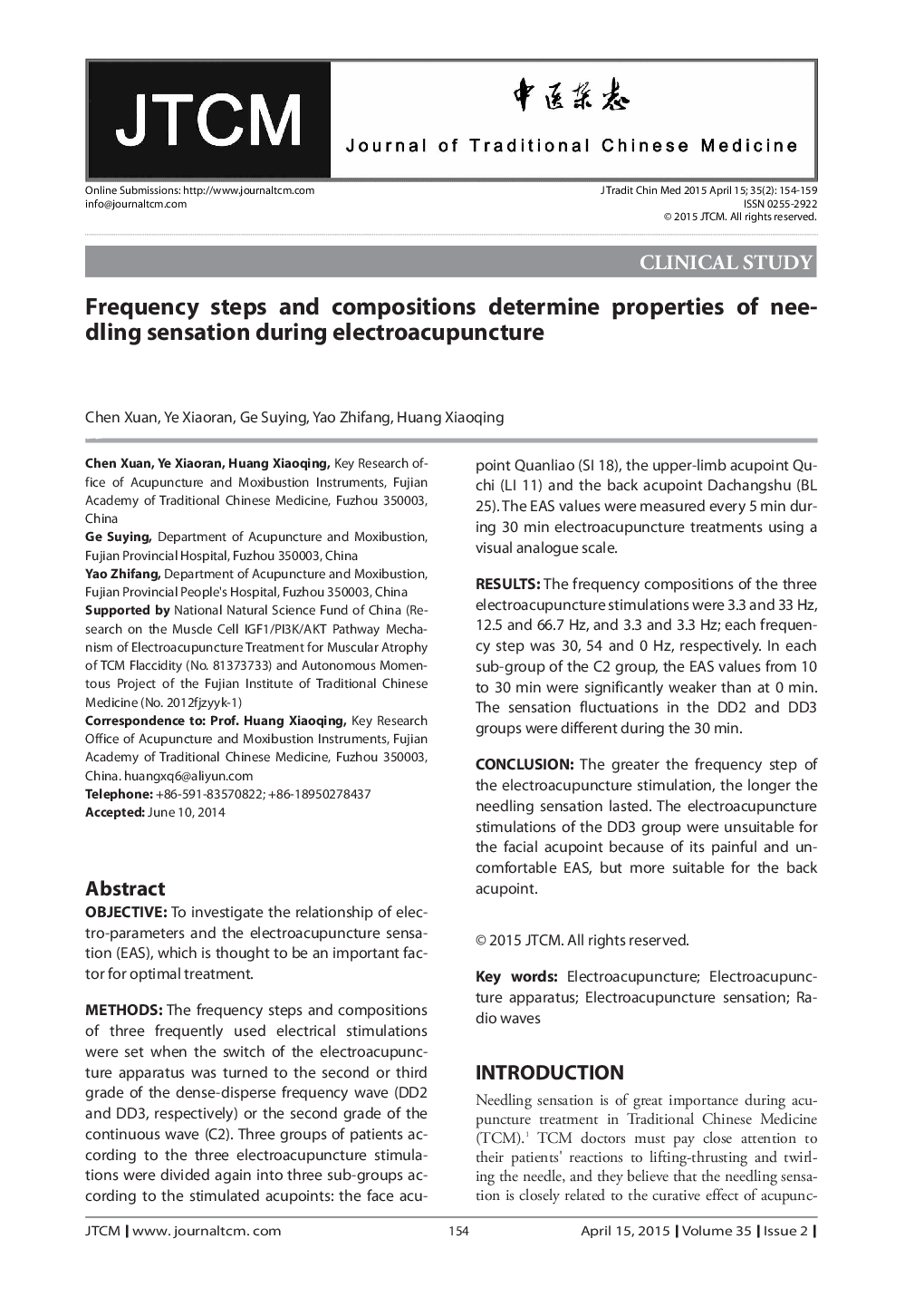| Article ID | Journal | Published Year | Pages | File Type |
|---|---|---|---|---|
| 4201296 | Journal of Traditional Chinese Medicine | 2015 | 6 Pages |
ObjectiveTo investigate the relationship of electro-parameters and the electroacupuncture sensation (EAS), which is thought to be an important factor for optimal treatment.MethodsThe frequency steps and compositions of three frequently used electrical stimulations were set when the switch of the electroacupuncture apparatus was turned to the second or third grade of the dense-disperse frequency wave (DD2 and DD3, respectively) or the second grade of the continuous wave (C2). Three groups of patients according to the three electroacupuncture stimulations were divided again into three sub-groups according to the stimulated acupoints: the face acupoint Quanliao (SI 18), the upper-limb acupoint Quchi (LI 11) and the back acupoint Dachangshu (BL 25). The EAS values were measured every 5 min during 30 min electroacupuncture treatments using a visual analogue scale.ResultsThe frequency compositions of the three electroacupuncture stimulations were 3.3 and 33 Hz, 12.5 and 66.7 Hz, and 3.3 and 3.3 Hz; each frequency step was 30, 54 and 0 Hz, respectively. In each sub-group of the C2 group, the EAS values from 10 to 30 min were significantly weaker than at 0 min. The sensation fluctuations in the DD2 and DD3 groups were different during the 30 min.ConclusionThe greater the frequency step of the electroacupuncture stimulation, the longer the needling sensation lasted. The electroacupuncture stimulations of the DD3 group were unsuitable for the facial acupoint because of its painful and uncomfortable EAS, but more suitable for the back acupoint.
